#Betsucomi
Text

ポーの一族 (The Poe Clan), Moto Hagio
108 notes
·
View notes
Text
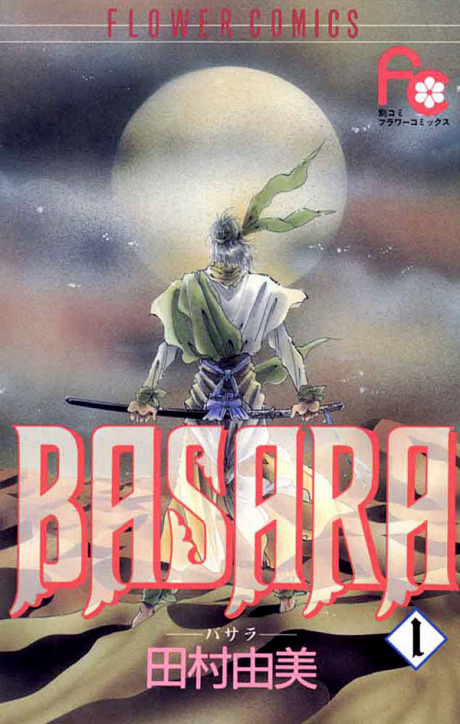
30 notes
·
View notes
Text
Teru Kurebayashi 🤍 | Dengeki Daisy


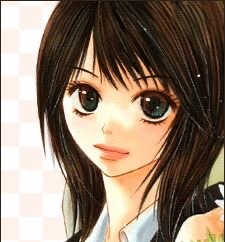


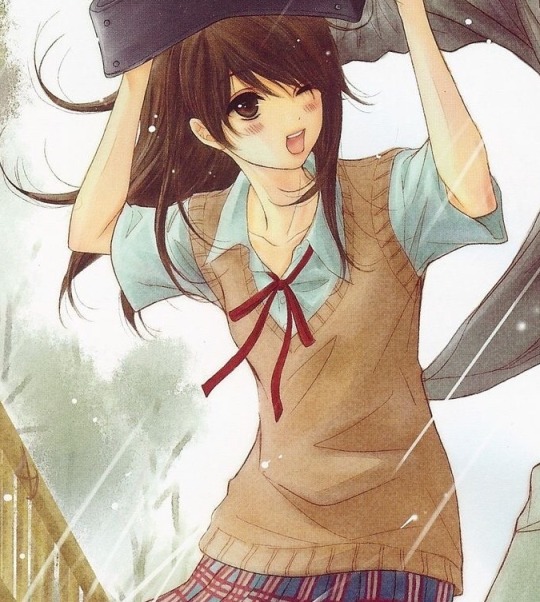
12 notes
·
View notes
Video
youtube
Viz Media has launched its new digital manga service Viz Manga. According to Viz, the new app's catalog now includes simultaneous English releases of ongoing manga from Shogakukan for "the first time," as well as classic manga titles. The service features over 10,000 chapters of both Shogakukan and Shueisha titles.
The simulpub catalog launches with 15 titles, with the three most recent chapters of each series available for free. Some of the titles included in the simulpub catalog are:
Black Lagoon by Rei Hiroe (Web only)
Call of the Night by Kotoyama
How Do We Relationship? by Tamifull
Insomniacs After School by Makoto Ojiro
Komi Can't Communicate by Tomohito Oda
MAO by Rumiko Takahashi
Persona 5 manga by Hisato Murasaki
Queen's Quality by Kyousuke Motomi
Sleepy Princess in the Demon Castle by Kagiji Kumanomata
The King's Beast by Rei Toma
Yashahime: Princess Half-Demon by Takashi Shiina
Zom 100: Bucket List of the Dead by Haro Aso
Viz Manga also added classic manga titles from legendary manga creators in its catalog such as:
Rumiko Takahashi: Inuyasha, Ranma 1/2, Mermaid Saga, and others
Junji Ito: GYO, Uzumaki, and others
Yuu Watase: Fushigi Yûgi, Absolute Boyfriend, and others
Inio Asano: Goodnight Punpun (Web only), What a wonderful world!, and others
Taiyo Matsumoto: Sunny, Tekkon Kinkreet, Ping Pong, and others
Gosho Aoyama: Case Closed
Ai Yazawa: NANA (chapters 25-80 web only)
Arina Tanemura: Full Moon, The Gentlemen's Alliance†, and others
Viz Manga is only available in the United States and Canada, and subscription costs US$1.99 per month. Viz continues to offer its separate Shonen Jump service.
#Viz Media#Shogakukan#Weekly Shonen Sunday#Ura Sunday#MangaONE#Sunday GX#Monthly Sunday Gene X#Betsucomi#Cheese!#Shonen Sunday S#Rumiko Takahashi#Gosho Aoyama#Junji Ito#Yuu Watase#Taiyo Matsumoto#Arina Tanemura#Kotoyama#Black Lagoon#Detective Conan#Komi San#Call of the Night#manga
25 notes
·
View notes
Text

Basara
27 volumes.
Licensed by Viz Media, but out of print.
"Basara - The spirit of freedom which denies old authority, transcending traditions and customs." Born under a prophecy that will liberate and unite Japan, Sarasa has had to take her brother Tatara's place as the "Boy of Destiny." Fighting for the oppressed, Sarasa journeys across Japan to gain allies and defeat her enemies--all while keeping her identity a secret.
Note: Basara won the Shogakukan Manga Award for shoujo in 1992
Anime Start/End Chapter:
Starts at Vol 1, Chap 1
Ends at Vol 5, Chap 19 Abridged
Status in Country of Origin:
27 Volumes (Tankoubon - Complete)
16 Volumes (Bunkoban - Complete)
Tags:
Abandoned Child/ren
Abuse of Power
Adapted to Anime
Award-Winning Work
Capable Female Lead
Changed by Love
Character Deaths
Character Growth
Child Death
Chosen One
Conspiracy/ies
Corruption
Cross-dressing
Death of Loved One/s
Destiny
Dystopia
Enemies Become Lovers
Female Disguised as Male
Female Fighter/s
Feminism
Historical Setting
Huge Cast of Characters
Loyalty
Manipulative Antagonist/s
Parental Abandonment
Past Plays a Big Role
Politics Involving Royalty
Post-Apocalyptic
Prophecy
Revenge
Revolution
Slave/s
Smart Couple
Star-Crossed Lovers
Suicide/s
Swordsman
Swordswoman
Torture
Tragic Past
Twin/s
War/s
#Basara#TAMURA yumi#action#adventure#comedy#romance#drama#fantasy#gender bender#mature#shoujo#manga#Shogakukan#betsucomi#1991#1990s#completed#viz media#Legend of Basara
21 notes
·
View notes
Text
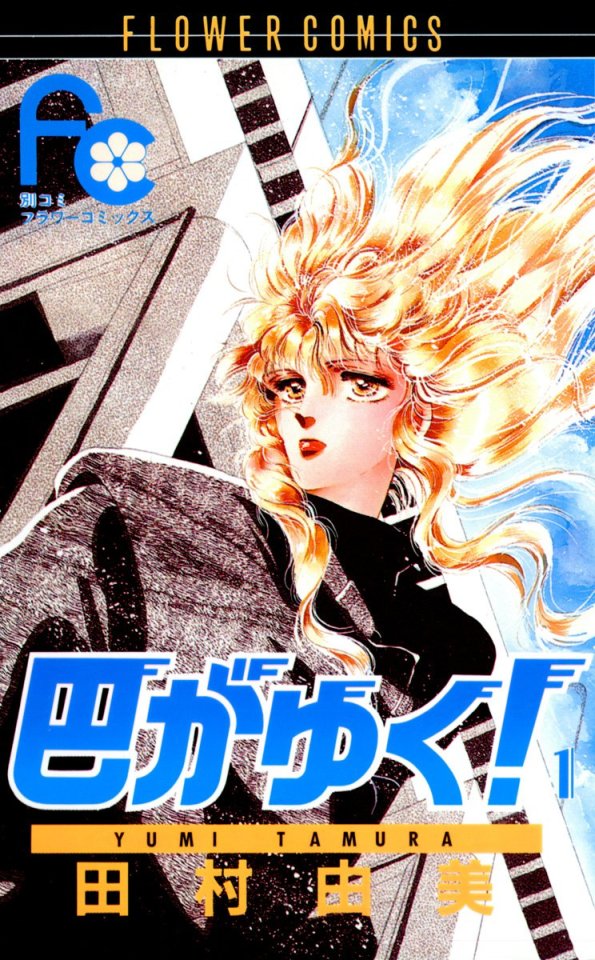


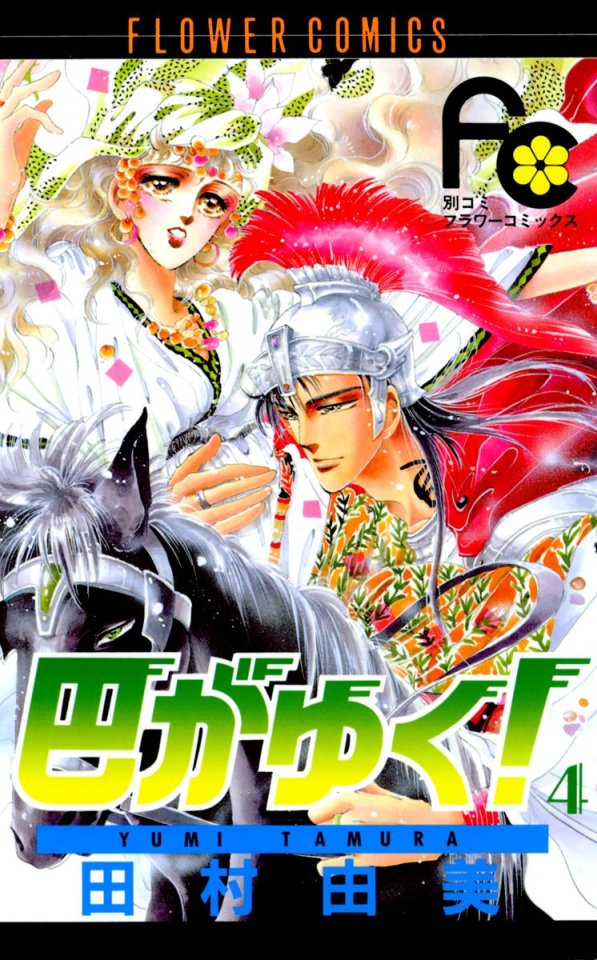
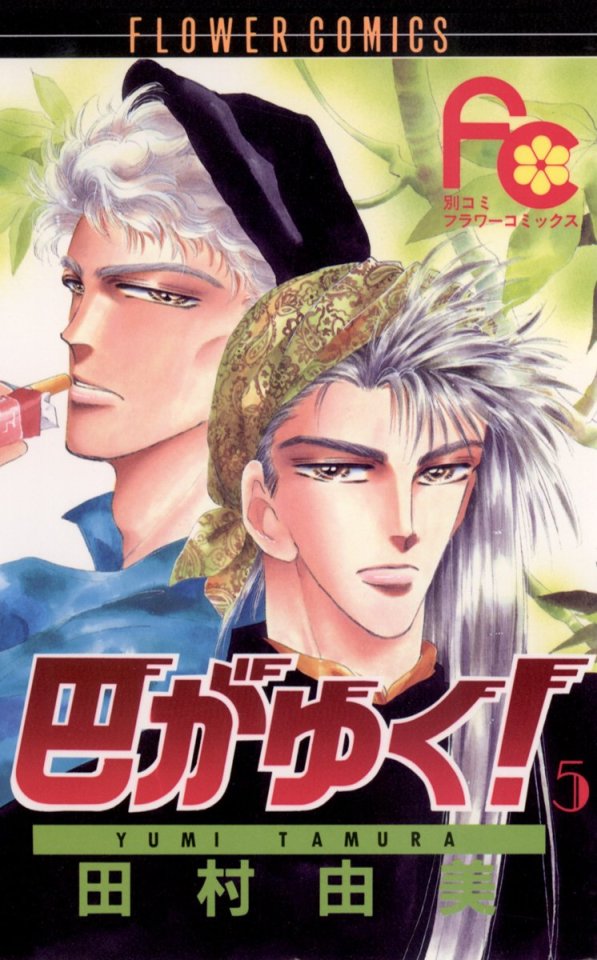



Tomoe ga Yuku! by Tamura Yumi
6 notes
·
View notes
Text

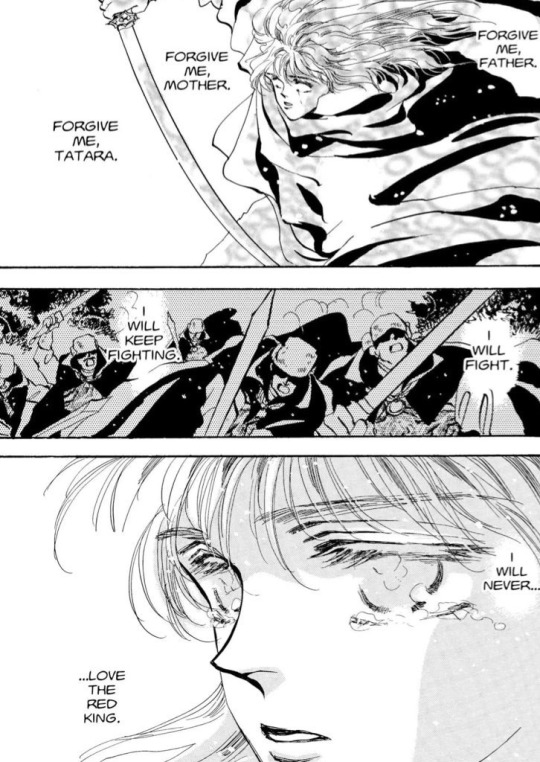
Once, I was the Their faith was
great hope for a strong, but I
dynasty pushed it too far
Crowds would I held that grudge,
hang on my words, ‘till it tore me apart
and they
trusted me
4 notes
·
View notes
Photo

Sharing another shoujo manga that was in the top 3 of Shoujo Crave’s Best Modern Shoujo poll!
I still need to finish Queen's Quality, but I sold off a bunch of other manga after reading the first few volumes (including all of QQ Sweeper!) from my library because I wanted to personally own this series!
I was so happy this was so highly voted because this has been one of the most impactful shoujo series I've read! SO GOOD!
#Queen's Quality#QQ Sweeper#shoujo manga#kyousuke motomi#shoujo fantasy#shojo romance#shoujo romance#shoujo#クイーンズ・クオリティ#最富キョウスケ#Shogakukan#The Mind Sweeper#Betsucomi#fumi Nishioka#shojo beat#shojo beat manga#manga cover#manga recommendation#shojo manga#manga community#manga couple#manga and stuff#VIZ manga#shoujo recommendation#shoujo cover#manga reader
4 notes
·
View notes
Text

Mikazuki Mao wa ♂♀ wo Erabenai
(Kiina Nishino, Deluxe Betsucomi, 2020-)
#mikazuki mao wa wo erabenai#mikazuki mao can't choose a gender#kiina nishino#manga#art#mangacap#manga girl#manga boy#black and white#romance#manga cap#illustration#monochrome#deluxe betsucomi#shoujo#shoujo manga#manga recommendation#shojo#shojo manga
19 notes
·
View notes
Text
Called Game
I've decided I'm going to start using this blog to keep track of mangas I've been enjoying.
I'll try to present each series without spoiling much of it!

I went in Kaneyoshi Izumi's Called Game pretty much blind, I only knew that it was a fantasy Shoujo, and that some of the people on Twitter that i follow really liked it.
I ended up really enjoying it!
Called Game is a Tudor inspired fantasy, loosely inspired by the real story of Henry VIII of England.
Our protagonist is Alna, nicknamed Sumire (Violet), a young princess who by virtue of being the youngest of many siblings wasn't expected to make a particularly advantageous marriage and was able to train as a knight. She's suddenly asked to mary the new king of a neighboring country, but we soon learn that Princess Alna is only one of the six women who has been selected as a potential new queen, and she must now take part in a deadly political game where only one can remain and win the crown.
The plot isn't very unique if you've read some historical ish political dramas (i was never blown away by any of the twist), but it's well written, and the characters are sufficiently well rounded to make Called Game a pretty enthralling read.
I think my favorite thing about this series is it's protagonist. Sumire is a "Oscar like knight" type of character, and she start very sure of herself and her abilities but she's soon confronted with the realization that formal training with guards is nothing like real combat, and that she has a lot to learn about her new place in this hostile royal court. She's an interesting character to follow, and although she's beautiful and charismatic she has to be really careful with the people around her, who don't always have her best interest in mind. All the others characters also have well thought of motivations and allegiances of their own, and I can't wait to see how the story will turn out for all of them!
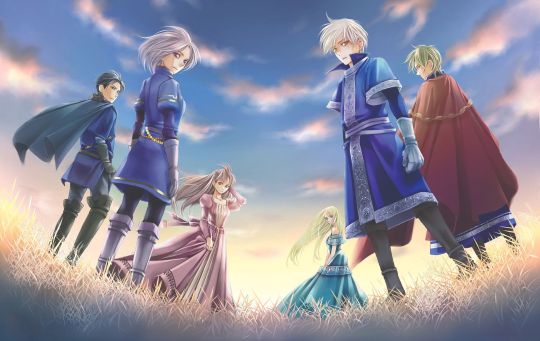
Right now I think it's only been licensed in French and German, but there's an English fan translation available. I really recommend checking it out!
#Called Game#cold game#Kaneyoshi Izumi#shojo#shoujo#manga recommendation#manga review#Doizy's little reviews#for some reason i thought Betsucomi got less mature after some of it's series were transferred to Flowers#and then i reached the end of volume one and realized i was wrong
2 notes
·
View notes
Text
Shoujo Manga's Golden Decade (Part 2)
Shoujo manga, comics for girls, played a pivotal role in shaping Japanese girls’ culture, and its dynamic evolution mirrors the prevailing trends and aspirations of the era. For many, this genre peaked in the 1970s. But why?
Part 1
The Year of 24 Group
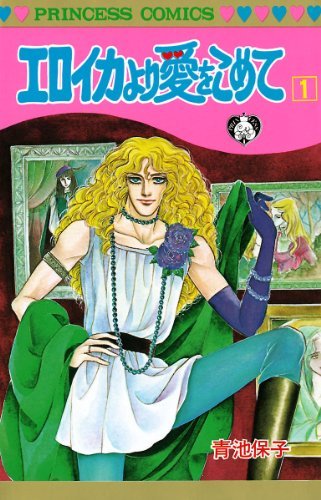
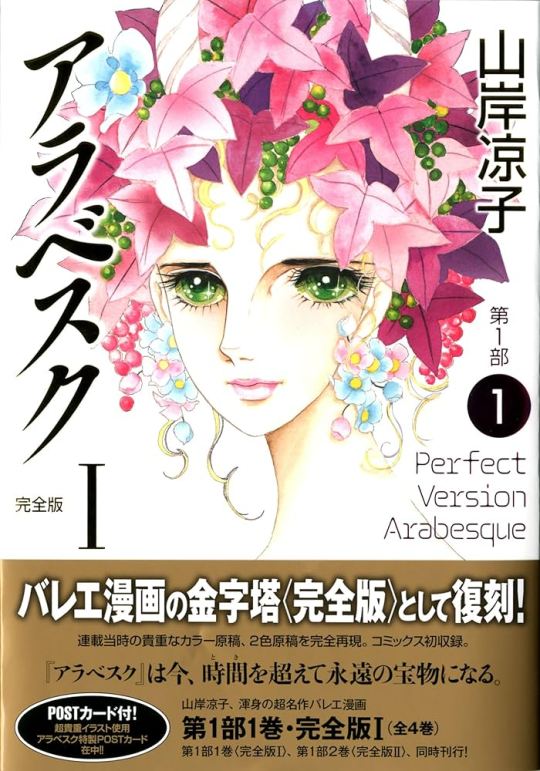
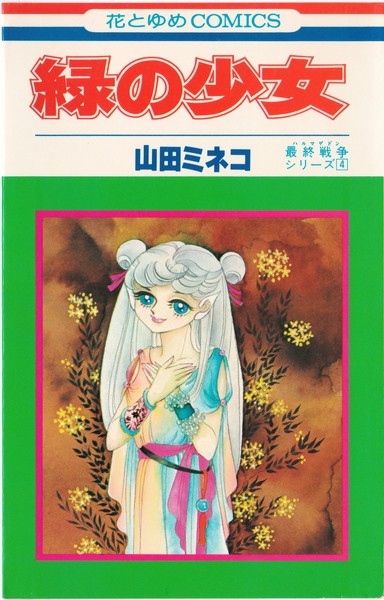

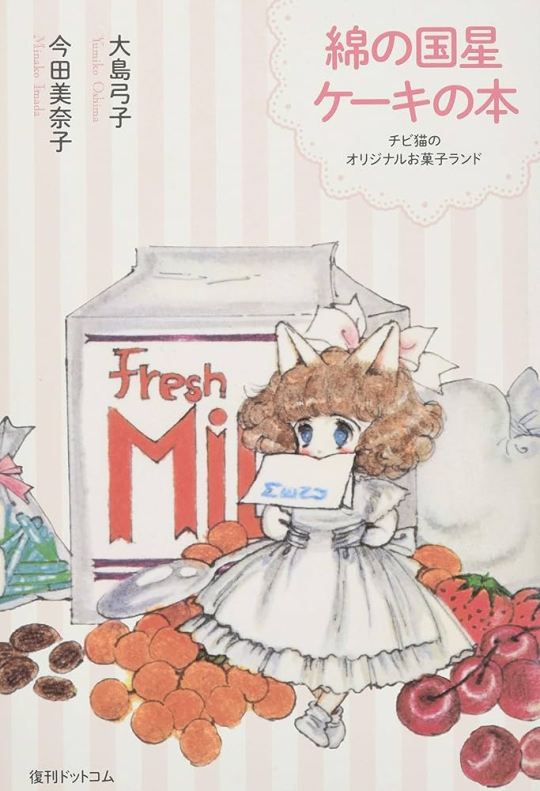

Some of the best-selling work by the Year 24 Artists (l-to-r): Yasuko Aoike's "From Eroica with Love," Ryoko Yamagishi's "Arabesque," Mineko Yamada's "Minori no Shoujo," Toshie Kihara's "Yomie no Ishibume," Yumiko Oshima's "The Star of Cottonland," Yuuko Kishi's "Tamasaburo."
Back in the early '70s, there was the prevailing notion that manga was for young kids. Despite the variety in themes, big magazines like Margaret, Shoujo Club, Nakayoshi, and Ribon were theoretically aimed at elementary school-aged girls.
In practice, the reality was more nuanced. Due to being published in Weekly Margaret, "The Rose of Versailles" was for kids. And it did very well with them. Yet, its revolutionary romance also appealed to broader audiences, exemplifying the crossover potential of shoujo manga. It was the title that opened the door for what is known as "the golden age of shoujo," which was further cemented by several other groundbreaking hits.
These hits widened the shoujo manga field, and soon, other editorial houses also wanted to cash in. Shogakukan, which published the powerful Weekly Shonen Sunday, entered the shoujo market in the late '60s. Shueisha and Shogakukan also partnered to form a keiretsu and open the Hakusensha publisher which deals mostly with shoujo manga.
That is the context in which a batch of artists known as "The Magnificent 24 Group" rose. And they were another key reason as to why '70s shoujo made such a mark. These manga-kas introduced themes such as sci-fi and homosexuality to the segment, revolutionized its art, further explored historical and terror narratives, and generally broke barriers of what was possible in shoujo manga. Their work was intellectually challenging, philosophical, and, above all, fundamental for male manga critics and connoisseurs to finally take shoujo seriously.
The Year 24 Group refers to the fact most artists were born around 1949, which is known as the year 24 of the Showa era in the Japanese calendar. These women came of age during the time artists like Hideko Mizuno were debuting and doing revolutionary work in the shoujo field, and they were eager to follow their lead. The success of unorthodox hits like "The Rose of Versailles" and the emergence of new magazines enabled them to be bold.
The two artists who led the movement are Moto Hagio and Keiko Takemiya. Their shared house in Tokyo, known as the Oizumi Salon, became a gathering place for several young artists keen on breaking new grounds for shoujo manga-kas. These women became the Year 24 group. But there were other two people, besides the artists themselves, who were just as crucial for the existence of the movement.
Firstly, there was Junya Yamamoto. Yamamoto was a young male editor at Shogakukan who had risen through the ranks of the successful Shonen Sunday weekly manga magazine. Noticing they were lagging behind Shueisha and Kodansha in the manga segment for their lack of a robust shoujo presence, the editorial house appointed Yamamoto to launch Shoujo Comic (known as Sho-Comi) in 1968 and Bessatsu Shoujo Comic (known as Betsucomi) in 1970. However, he quickly ran into an issue: most successful shoujo artists already had exclusive contracts with the competing houses, and aspiring names were vying for positions at the already established magazines.
In 1969, the "God of manga," Osamu Tezuka, introduced Yamamoto to Keiko Takemiya, then a university student living in Tokushima City. Takemiya had spent her school years dreaming of becoming a manga-ka and participated extensively in the readers' corner section of COM. COM was an avant-garde manga magazine Tezuka founded to nourish young talents and publish stories without the typical restraints of more commercial shoujo and shonen publications. In her first year of college, Takemiya won a Shueisha's Weekly Margaret newcomer competition and had a work published in the magazine. Still, she was persuaded by her parents to focus on her studies instead and to leave manga as a side hobby.
Yamamoto, in turn, was impressed with her talent and convinced her to chase her dreams. Quickly, she found work in all three publishers and started simultaneously publishing in Kodansha, Shueisha, and Shogakukan's shoujo titles.
Meanwhile, Moto Hagio also grew up enamored with the manga world. During her college years, she had a work selected by Shueisha's Bessatsu Margaret (Betsuma) through a competition, but she could not find a fixed slot in the magazine. Then, she got introduced to Kodansha's Nakayoshi editors, who were impressed by her talent. While she did start publishing short stories there, editors rejected most of her submitted work as they did not fit the magazine's mold. One day, an editor introduced her to Takemiya, who, overworked while working for several magazines, was in dire need of an assistant. The two hit off, and Takemiya, who until then had her permanent residence in far away Tokuma City but was planning a move to Tokyo, proposed they both live together. She also decided to introduce Hagio to risk-taker editor Yamamoto, who, impressed by her talent, encouraged her to pursue her path instead of trying to fit into the expected shoujo template.
Then there was Norie Masuyama, who first became acquainted with Moto Hagio before becoming Takemiya's manager. Hagio was from Fukuoka, while Masuyama was from Tokyo, but due to their similar interests, they became penpals. When Hagio first moved to Tokyo, Masuyama hosted her in her home in Oizumi. Eventually, Hagio introduced Masuyama to Takemiya, and the three of them became close. Because both were artists from outside of Tokyo, Masuyama suggested Keiko and Moto should live together, and she was the one who alerted them of a house in her Oizumi neighborhood being up for rent.
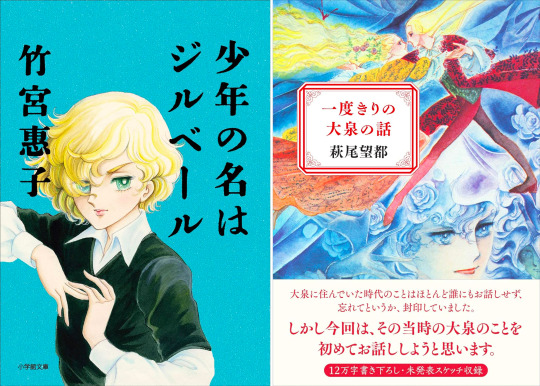
Keiko Takemiya and Moto Hagio, estranged since the late '70s, revealed details of their feud in autobiographic books: Takemiya's "Shonen no na wa Gilbert" (2019) and Hagio's "Ichidou kiri no Oizumi no Hanashi" (2021). The dispute, stemming from Takemiya accusing Hagio of plagiarism, was fueled by Takemiya's jealousy during a challenging creative and personal period. While Takemiya appears self-aware and analytical in her account, Hagio's book indicates she hasn't forgiven Keiko, revealing unresolved feelings. The publications triggered intense online debates.
Masuyama came from a sophisticated family that was very involved in arts and, from a young age, got familiarized with the world of music, literature, and movies. Her refined taste impressed Hagio and Takemiya. At a time when Japanese girls dreamed of Europe, Masuyama actually had friends living there and was up-to-date on the latest European trends. She also had a lot of knowledge of European cinema and literature.
As their rented house was old and rusty, Hagio and Takemiya started spending a lot of time at Masuayama's house across the street. She introduced them to films, songs, books, and paintings. It was Masuyama's taste -- including her interest in movies and books depicting gay romance and her desire for girls' comics to have bolder and riskier themes -- that helped to instill a passion in both artists to go further than the safe cliches usually depicted in shoujo works.
In 1970, editor Yamamoto convinced Takemiya to sign an exclusive contract with Shogakukan. The following year, Hagio also started publishing for Sho-comi and Betsucomi. Their work would attract a loyal fanbase, and aspiring manga-ka would flood their mailboxes. So Takemiya made a decision: to select female artists around her and Hagio's age to mentor and train at their shared home. Thus, the Oizumi Salon was born.
Despite attracting attention, Takemiya and Hagio's works were not always popular. In fact, they'd often rank last in readers' popularity polls, which tend to be all-deciding in manga magazines. But they persevered, and Yamamoto trusted them.

Keiko Takemiya aimed to establish herself with a top-rated series through "Pharaoh no Haka" (left) in order to garner the necessary respect from editors to write the series she wanted, "Kaze to ki no uta" (right). Despite her resolute efforts, "Pharaoh no Haka" never secured the top spot in Sho-comi's readers' poll, peaking at #2. Nevertheless, the series succeeded in elevating her fame and earning her the respect she sought.
In 1972, Hagio had an idea for a serial focused on a male European vampire. However, as she wasn't a famous artist, Yamamoto only allowed her to publish one-shots. So she came up with a plan: to write three interconnected standalone stories. To circumvent another restraint - shoujo editors' avoidance of male leads - she put the first story focus on Marybelle, Edgar's sister. Once Yamamoto realized what Hagio was doing, he was amused and allowed her to continue. And so, "The Poe Clan" series began. In 1974, Shogakukan finally started publishing their shoujo titles in compiled paperback format. In another proof of trust, Yamamoto chose Hagio's "The Poe Clan" as the first title of the Flower Comics imprint.
To everybody's surprise, "The Poe's Clan," in paperback format, was a groundbreaking success, almost instantaneously selling out its initial printing. At the time, Hagio had just started a new serialization, "The Heart of Thomas," a tragic gay love story set in an all-boys German school. As usual for her, the story wasn't all that popular with Sho-Comi's readership, and its lackluster results in the reader's poll almost got the series discontinued. But the notable success of "The Poe's Clan" tankobon assured editors, who allowed Hagio to continue the series. "The Heart of Thomas" went on to become another best-seller and a seminal shoujo title. It also attracted critical acclaim and a loyal fanbase to Moto Hagio, which in turn helped put the Year 24 artists -- who were pretty good at self-promotion -- in the spotlight.
Hagio, Takemiya, and several other "Year 24" authors drifted between being popular and underground. They had a sizable, loyal fanbase that followed them and turned several of their works into best-sellers. On the other hand, by finding a way around the usual shoujo traditions, they weren't particularly popular with the average shoujo reader, ordinary young girls across the country.
Their peculiar position forced them to be clever, so they could fulfill their creative desires as well as their editors' expectations, who were there to make sure the stories published were satisfying to the core readership. Takemiya wrote "Pharaoh no Haka," an Egypt-set romantic adventure, to be well-accepted so that she could then dedicate herself to doing what she truly wanted in "Kaze to Ki no Uta," a gay love story set in a 19th Century French boarding school.
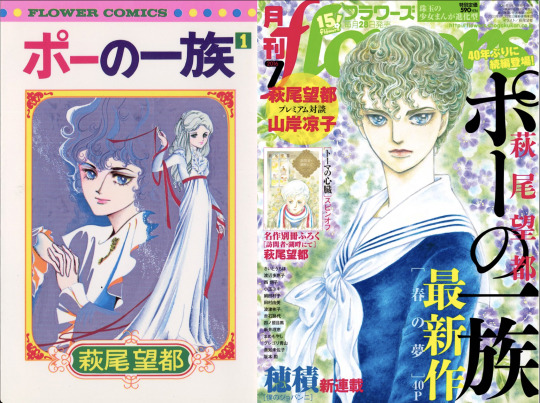
Initially overlooked in popular shoujo magazines, Moto Hagio gained success with "The Poe Clan" in compiled format, launching Shogakukan's Flower Comics imprint. Over time, she became a highly respected manga artist, the only manga-ka alongside legendary filmmaker Hayao Miyazaki to receive a Person of Cultural Merit recognition. In 2016, marking 40 years of the conclusion of her first hit, she released a new "The Poe Clan" chapter in Flower magazine, selling out the increased print run of 50,000 copies in a day. This success marked a significant shift for Hagio, who, despite not being a major magazine seller in earlier years, became a valuable asset to the struggling publishing industry. Following the one-shot, she released three more chapters and, in 2022, began a new sequel series.
Besides Takemiya and Hagio, several other notable shoujo artists who went on to become huge names used to frequent the Oizumi Salon and were part of the "Year 24 group." In the early '70s, most published their work on Shogakukan's titles, which had a "free policy" on storytelling compared to Margaret, Shoujo Friend, Nakayoshi, and Ribon. Then, as Shogakukan started being more strict to properly compete with the market leaders, several moved to newly launched Hakusensha titles Hana to Yume and LaLa. Influential names that were part of the movement included Yumiko Oshima, Yasuko Aoike, and Ryoko Yamagashi, among several others.
Despite their unorthodox preferences, they weren't necessarily trying to rebel against the system, they simply wanted to put out good quality work they believed in. Like other Japanese girls from that era, they were fascinated by Europe, and plenty of their stories took place on the continent. In 1972, Hagio, Takemiya, Yamagishi, and Masuyama made a 45-day trip to Europe, visiting the Soviet Republic, France, and several other countries, which had a profound impact on them. Still, their narratives were widely innovative. They often had male leads, introduced sci-fi, "boys' love," and other bolder genres to shoujo manga, and contributed to the evolution of shoujo illustration. Above all, this group of artists was the one who made clear to naysayers, once and for all, that shoujo manga is indeed an art form.
But while their influence in manga history is undisputed, other significant -- and much more commercial -- manga movements also shook the shoujo manga world during that decade.
A Need for Drama
When talking about '70s shoujo manga, it's common for minds to drift directly to iconic series from that time, like "Candy Candy" and "Rose of Versailles." But, unlike in present times, in that decade, the manga industry's focus wasn't on successful, long-running series but on the artists themselves.
As opposed to the struggling publishing marketing of today, major shoujo manga magazines all sold over 1 million copies during that decade. Manga in tankobon (standalone paperback) format was turning into a money-maker field, but being able to sell paperback was very much secondary compared to being a name capable of selling magazines. Keiko Takemiya and Moto Hagio, from the Amazing Year 24 Group, would go on to become household names and had best-selling series, but, at the time, they couldn't compete with the actual shoujo manga superstars who were the signboard artists of the Kodansha and Shueisha's shoujo titles, the ones who actually moved publications. These artists' work was the most significant indicator of what the mainstream readers wanted and aspired to back then.
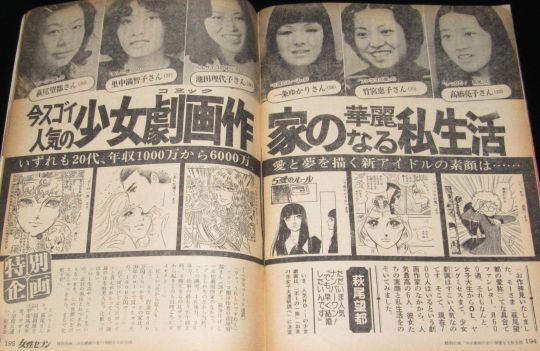
In a December/1975 issue, weekly Josei Seven spotlights the new generation of superstar shoujo manga artists: (l-to-r) Moto Hagio, Machiko Satonaka, Ryoko Ikeda, Yukari Ichijo, Keiko Takemiya, and Ryoko Takahashi. While contemporary manga-kas are highly discreet about their lives and do not even tend to show their faces, in the '70s, they were treated like superstars, and, in the article, the manga-kas openly discuss their love life and details of their high incomes, including how much they had in the bank and how much they spent on rent and daily utilities.
For Kodansha, the top shoujo artist was definitely Machiko Satonaka, who won the Best New Artist competition in 1964, when she was still a freshman in high school. There have been several high-schoolers making their debut in the industry throughout the decades, but, as the first, Satonaka caused a media frenzy. Her ascent gave confidence to countless other young women -- from "Glass Mask"'s Suzue Michi to Keiko Takemiya (who also won a smaller prize in the same competition) -- to pursue their manga careers.
The attention surrounding Satonaka, who went on to become a public personality with TV hosting gigs and other appearances, is another interesting, nostalgic phenomenon. In the past, it was common for manga superstars to have a strong media presence. Nowadays, the norm is the complete opposite: for manga-kas to be highly private, no matter how famous their work is.
In any case, Satonaka quickly proved herself to be more than a sensational news story as she created extremely popular mangas for Kodansha shoujo titles like Shoujo Friend and Nakayoshi. Her style, widely accepted by readers, became symbolical of the story-telling the '70s girls craved: extremely dramatic with emotionally driven plots and lots of bombastic twists and developments.
In his book on subcultures and otaku culture, sociologist Shinji Miyadai notes that '70s shoujo manga can be divided into very few categories. There is the category the Year 24 artists dominated -- which he defines as the "Moto Hagio domain" -- of works with a lot of artistic value, up-to-par with literature. And then there's the far more commercially viable "Satonaka domain," which represented the mainstream taste.
In the "Satonaka category," the artist depicts a stormy life story as a proxy experience for the readers. Of course, there are universal elements of love, friendship, and insecurity that girls can directly relate to. Still, these stories provide adventures that readers could never experience in the real world.
These facets of the "Satonaka domain" are present in almost all the best-selling, mainstream shoujo series of the '70s, like the revolutionary historical romance of "The Rose of Versailles," the dramatic rags-to-riches story of the beautiful orphan in "Candy Candy," and the rise of an ordinary girl to the top of the sports elite in "Ace wo Nerae." In all of these titles, you'll also spot other defining characteristics of '70s shoujo: the death of beloved characters and beloved female characters with voluminous blonde hairs and huge, sparkling eyes (a legacy of Macoto Takahashi, the illustrator who, throughout the '50s, created the art that directly influenced subsequent shoujo history).
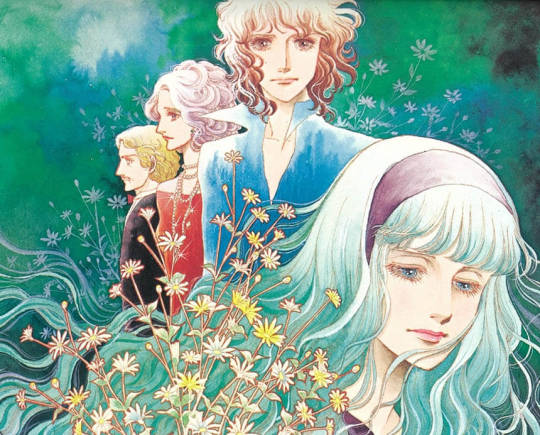
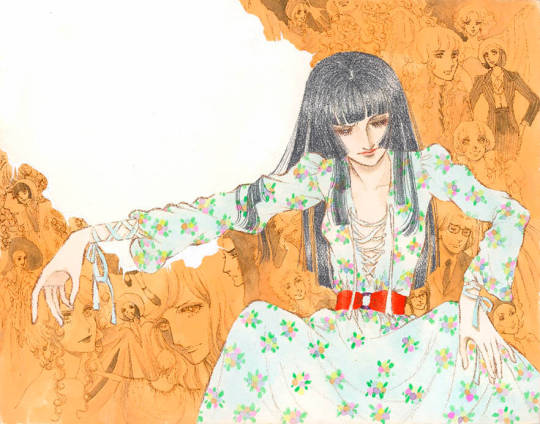
Yukari Ichijo was the most prominent Ribon signboard artist throughout the '70s, creating popular mangas like "Suna no Shiro" (left) and "Designer (right). Young girls across the country adored her work despite the adult drama in it.
Since these stories are extraordinary and dream-like, many of them use Europe or the US as their setting, another reflection of the times when Japanese youth dreamed with the West.
While Satonaka was Kodansha's star, Shueisha also had its top shoujo artists. For Margaret, it was Ryoko Ikeda who kept creating memorable dramatic manga after the conclusion of "The Rose of Versailles." Other classic '70s dramatic works published in the weekly included Kyoko Ariyoshi's ballet drama "Swan." Meanwhile, over at Ribon, no one shone brighter than Yukari Ichijo. Ichijo's works, which young girls across Japan devoured, contained a lot of adult drama with adult characters. Her 1974 manga, "Love Game," had a bed scene. One of her most celebrated works of the decade, "Suna no Shiro" (Sand Castle), dealt with incest. While Ichijo is the one who stood the test of time, another artist who also enjoyed great popularity in Ribon following this formula was Kei Nogami.
These mangas served as an escape for girls, who left their ordinary school life behind for a few hours to embark on extraordinary adventures. In contrast, one of the main genres in contemporary shoujo is unassuming, everyday high school romance. How could the shoujo segment go through such a drastic transformation? The reasons for that also dates back to the 1970s.
Part 3
#shoujo manga#vintage shoujo#otometique#yumiko oshima#keiko takemiya#yumiko tabuchi#hideko tachikake#machiko satonaka#yukari ichijo#ribon#1970s japan#1970s#year 24 group#moto hagio#vintage manga
38 notes
·
View notes
Text

ポーの一族 (The Poe Clan), Moto Hagio
41 notes
·
View notes
Text
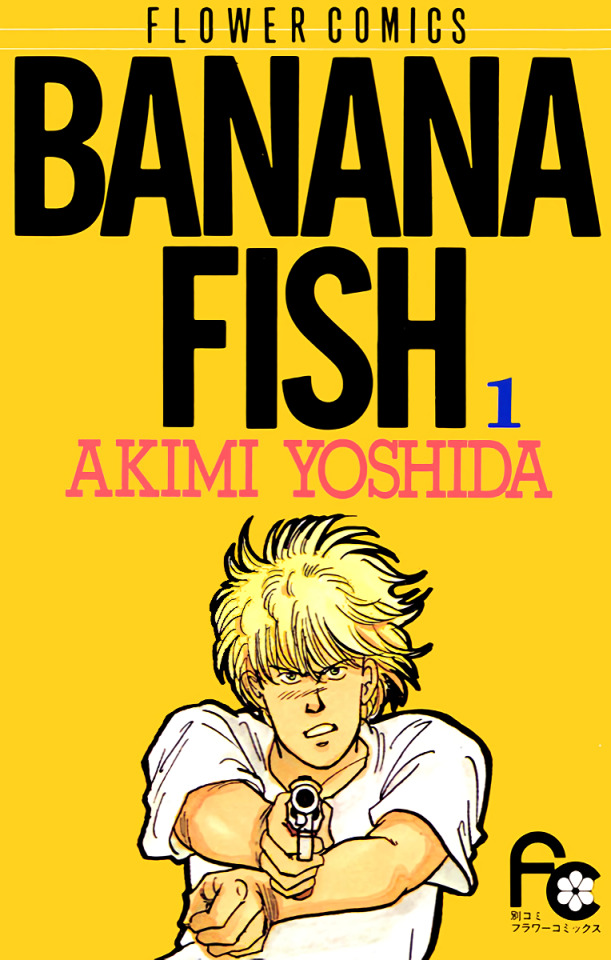
32 notes
·
View notes
Photo


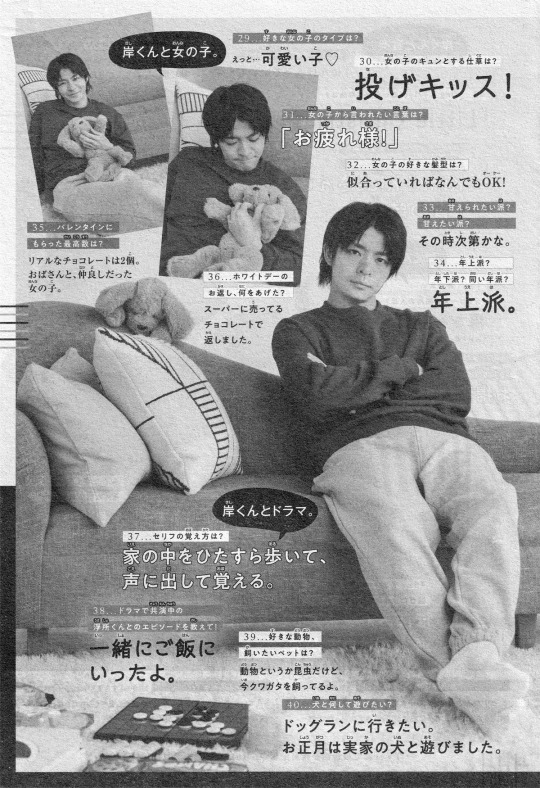


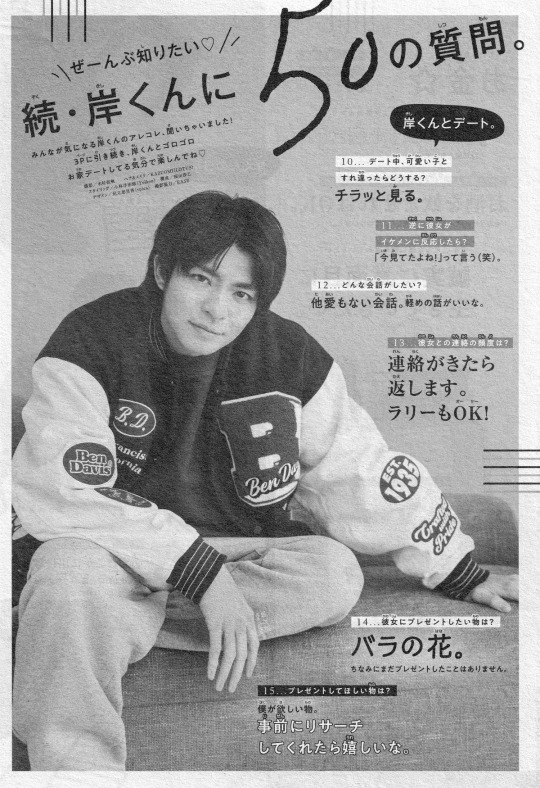

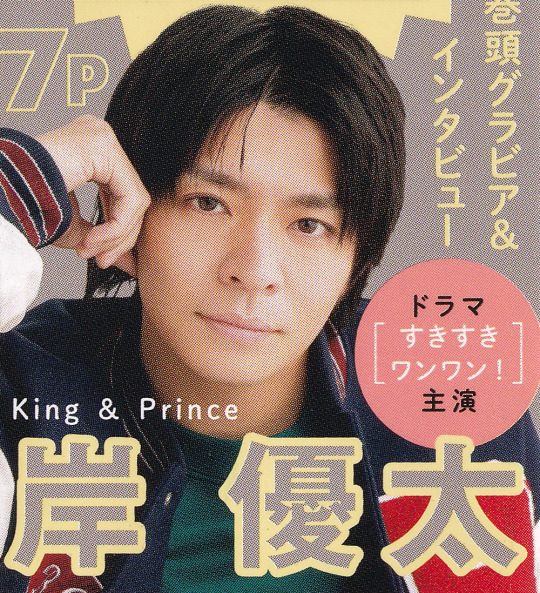
Kishi Yuta
Betsucomi 2023年03月号
8 notes
·
View notes
Text
Salve de tomes 1: épisode 3
Seulement trois mois se sont écoulés depuis mon dernier article de tomes 1. Entre temps, j’ai enfin pu lire le tome 2 de Kageki Shojo, continuer les lectures du Requiem du Roi des Roses ainsi que de Ton visage au clair de lune, et même terminer Kids on the Slope (qui était génial !). J’ai consacré la fin de l’année 2022 à ce dernier, à Nakamura Asumiko dont j’ai relu All About J et Inheritance of Aroma puis, enfin, à la tannée qu’a été Vampires d’Osamu Tezuka. Depuis le début de cette année, je n’ai pas énormément lu. Je me suis plongée à corps perdu dans la huitième partie de JoJo’s Bizarre Adventure: Jojolion. J’ai aussi eu une fringale de BL donc j’en ai profité pour découvrir le travail de Scarlet Beriko dont je recommande vivement Jealousy ! J’ai aussi commencé Gals! (Mihona Fujii) que je prends le temps de lire tant c’est une lecture qui me fait chaud au cœur ! J’avoue m’être aussi investie dans le webtoon, en continuant Rumor Has It (sungA) à raison d’un chapitre par jour et en commençant le dernier titre de Soonkki, After School Lessons for Unripe Apples. Toujours est-il que trop de Jojo tuant le Jojo, je me suis dit qu’il était temps que je m’attaque un peu à ma pile à lire qui ne fait que de grandir. Ainsi, j’ai entamé la lecture de plusieurs mangas… Shôjo, josei, shônen, seinen, tout y passe !
Le premier manga à être passé entre mes mains est Yasha d’Akimi Yoshida. Pré-publié dans le magazine shôjo Betsucomi, le manga est disponible en France aux éditions Panini à 16,99€. Sei Arisue est un petit garçon, il vit paisiblement sur l’île d’Okinawa auprès de sa mère et de son meilleur ami, Toichi Nagae. Enfant aux capacités extraordinaires, il se retrouve kidnappé par un mystérieux groupe. Six années après, on retrouve Sei aux États-Unis, scientifique accompli travaillant pour le groupe pharmaceutique Neo Genesis.
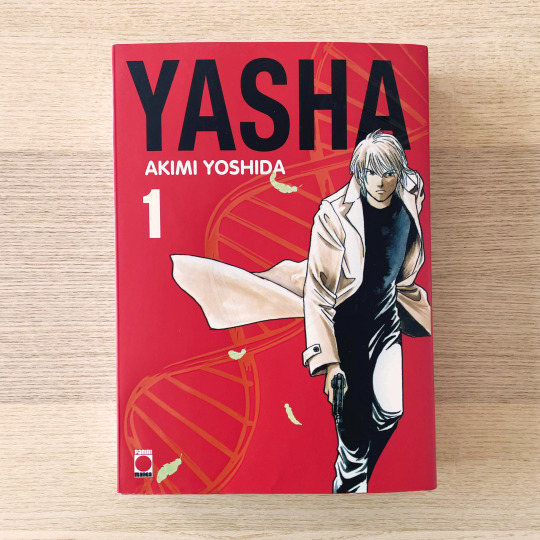
Akimi Yoshida ne fait pas vraiment partie de mes mangakas fétiches. Pourtant, quel plaisir ça a été de la retrouver avec Yasha ! La comparaison avec Banana Fish est inévitable: l’ambiance et les personnages sont similaires et la maestria de narration de la mangaka reste la même d’un manga d’action à un autre. Pourtant, j’ai trouvé à Yasha suffisamment de points de divergence dans l’histoire avec Banana Fish pour que le titre ne souffre pas de cette comparaison. C’est un nouveau contexte, et les ramifications de l’histoire sont différentes. Évidemment, j’ai aimé les passages d’action ! Tout d’un coup la tension monte grâce à un jeu de trames redoutable, et le manga bascule dans l’action d’une page à l’autre. Akimi Yoshida vient casser les angles droits de ses cases rigoureusement rectangulaires, amenant ainsi du mouvement, et n’hésite pas à mettre la dose de lignes de vitesse pour nous embarquer au cœur de l’action ! Ce type de découpage a beau être le fondement d’un passage d’action, il n’en demeure pas moins super efficace. La mangaka utilise très justement, avec un certain équilibre, chaque élément pour que ces passages convoquent le sentiment d’importance lié aux situations au sein de l’histoire. Je ne saurai mettre exactement le doigt dessus, mais il y a quelque chose de redoutablement percutant chez Akimi Yoshida. De plus, les personnages de Yasha, et particulièrement les jumeaux (car c’est une histoire de jumeaux !) ont quelque chose de très fascinant. À chaque fois qu’on pense être proche de Sei, dans les moments comiques notamment, il nous échappe. Je crois que cet aspect, avec un personnage principal insaisissable et grandement fascinant, participe au plaisir que j’ai ressenti en retrouvant Akimi Yoshida avec Yasha. Au fil des pages, les mystères entourant Sei s’épaississent, l’histoire nous échappe. Il me tarde de lire la suite pour découvrir jusqu’où Akimi Yoshimi m’emmènera avec Yasha !
Le second manga de la liste est Toilet-Bound Hanako-kun d’AidaIro. Étiquetté shônen par l’éditeur français Pika, le manga est en cours de publication au sein du magazine à la cible éditoriale mixte: G-Fantasy. Le manga est disponible dans toute bonne librairie pour un prix de 7,70€. Nene Yashiro a un crush… à sens unique. Désespérée, elle décide de s’en remettre à la légende de Hanako, un esprit qui hanterait les toilettes de l’école. Cependant, tout vœu formulé auprès de Hanako a un prix… Nene se retrouve à devenir l’assistante de Hanako ! Ainsi débutent les aventures d’Hanako et de son assistante Nene au sein de l’école Kamome !

Est-ce que vous vous attendiez à un avis sur Toilet-Bound Hanako-kun de ma part ? Moi non ! Mais de nombreux passages en librairies m’ont rendue curieuse ! Je trouve chacune des couvertures de ce manga superbes. J’aime beaucoup l’ambiance mystérieuse et fantasque qui se dégage de ces illustrations. Je trouve aussi le travail de AidaIro autour de la couleur très beau, que ce soit dans le rendu de la technique et des outils employés que dans la palette choisie pour chaque tome. Mais ai-je bien fait de me fier aux couvertures ? Eh bien, je dis que oui ! J’ai été ensorcelée par ce premier tome ! Je suis complètement sous le charme du dessin de l’auteur et de l’univers qu’il a réussi à développer. Fourmillant de détails, je suis retrouvée totalement immergée dans cet univers cabalistique fait d’esprits, de fantômes et de légendes urbaines japonaises. De plus, le style moe, accompagné de la souplesse du trait, fait de Toilet-Bound Hanako-kun un manga aux graphismes irrésistibles. Je suis aussi très charmée par le côté épisodique du manga, chaque chapitre est comme une nouvelle aventure à la découverte d’un nouvel esprit. Un fil rouge commence aussi à se mettre en place, notamment autour des origines de Hanako-kun et de l’apparition du personnage de Minamoto qui s’ajoute au duo formé par l’esprit et Nene. À l’image d’un Détective Conan, c’est un manga qui peut durer très longtemps grâce à son côté épisodique, et dont le fil rouge ne viendra tisser la toile de fond que de manière très sporadique. Seuls les tomes suivants me le diront !
Le troisième manga de cette salve de tomes 1 est Entre les lignes de Tomoko Yamashita. Pré-publié dans l’excellant magazine Feel Young, Entre les lignes est publié en France par les éditions Kana et est disponible au prix de 7,55€. Le manga commence avec le personnage adolescent d’Asa qui, après avoir perdu ses parents dans un tragique accident de voiture, emménage chez sa tante écrivaine Makio. Les deux, parentes mais distantes, vont devoir apprendre à vivre ensemble.

Enfin ! Après tout mon cercle Twitter, je me lance dans Entre les lignes ! Je ne sais pas si je peux dire que j’ai aimé ce premier tome, si je le prends simplement comme un tome isolé des suivants. Cependant, il m’a donné envie d’en apprendre plus sur Asa et Makio. C’est un premier tome qui pose les bases, qui nous indique les problématiques qui se noueront ou se dénoueront dans les tomes suivants. Tout de suite, on en apprend beaucoup: le mystère autour de la relation d’Asa avec ses parents, la mésentente entre Makio et sa sœur, ou encore, le travail et les relations extérieures de Makio. Bien sûr, aussi, le cœur de l’histoire: les liens à nouer entre Asa et Makio, comment elles vont cohabiter et comment leurs individualités vont s’entrechoquer. J’ai trouvé ingénieux de faire ces premiers chapitres en deux temps. Le tout premier chapitre est un chapitre qui se passe au présent, puis les suivants, jusqu’à la fin du tome, sont un flash-back de l’arrivée d’Asa chez sa tante. Ce sont ces deux temps qui me rendent curieuse vis à vis de la suite, que s’est-il passé entre le premier chapitre, où Asa est en terminale, et le reste, où elle est en 3ème ? Graphiquement, on retrouve bien le côté minimaliste de Tomoko Yamashita. La mangaka utilise aussi des techniques classiques de ce genre de récit centré sur les relations sociales: le fond noir pour les souvenirs, et beaucoup de jeux de regards entre les personnages. La mangaka utilise aussi de manière brillante la métaphore du désert pour le vide intérieur ressenti par Asa. « C’est sûrement la solitude. » dit Makio. Dans ces moments de vide, Asa n’est même plus dans le lieu présent, elle est dans le désert de son être. Plutôt qu’être une lecture qui m’aura passionné, le premier tome d’Entre les lignes m’a laissé un sentiment de grande curiosité. Que se passera-t-il pour Asa et Makio, qu’on t-elles au fond d’elles ? Comment est-ce que leur relation va évoluer ? Si je suis curieuse de connaître la suite, je pense que c’est un manga que je ne lirai qu’avec parcimonie, afin d’en profiter au maximum.
Le quatrième manga à m’être passé entre les mains est Mon Petit ami Genderless de Tamekou. Lui aussi pré-publié dans le magazine Feel Young, il est publié dans nos contrées par les éditions Akata, et est disponible pour un prix de 8,05€. Wako est une jeune femme travaillant pour une maison d’édition. Son petit ami, Meguru, est un homme genderless travaillant dans une boutique de vêtement, et est très populaire sur les réseaux sociaux. Couple hétéro défiant les conventions, on suit leurs aventures au quotidien. Avant d’aller plus loin, il convient de dire que genderless, ici, ne veut pas dire non-binaire, mais se réfère davantage à un style vestimentaire défiant la règle des vêtements genré.
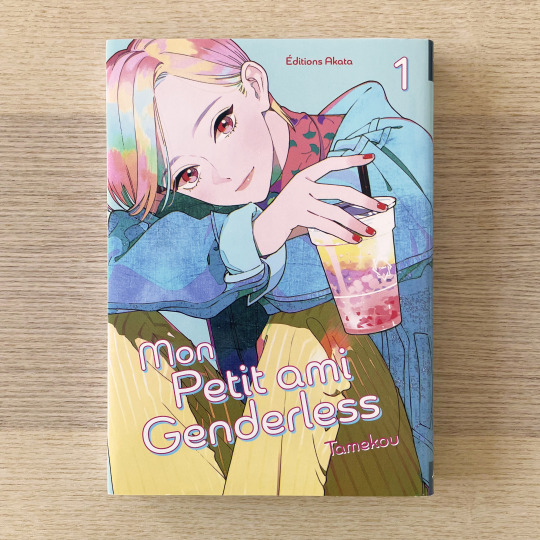
Intéressée par la mode, les styles alternatifs, j’avais eu hâte de découvrir Mon Petit ami Genderless ! Puis par manque de moyens, je l’ai laissé filer jusqu’à finalement le trouver en occasion. J’avoue que ce n’est pas plus mal, car j’en suis ressortie assez mitigée. Commençons par le positif ! J’adore le dessin de Tamekou, il est assez fin, pop et acidulé. Malgré l’absence de couleur dans le manga, ce côté acidulé se retrouve notamment dans les trames utilisées par l’auteur: étoiles, cœurs, carreaux, dentelles ou encore pois sont omniprésents. J’ai aussi beaucoup aimé les moments comiques, notamment le malentendu avec la collègue de Wako qui, après avoir croisé cette dernière et son petit ami genderless dans la rue, est persuadée que celle-ci est lesbienne. Ce qui est comique ce n’est pas que Wako soit potentiellement lesbienne, mais qu’elle laisse croire à sa collègue que c’est vrai, alors que tout le monde sait que c’est faux. Globalement, le manga aborde les rôles de genre sous différents angles (comment on doit s’habiller, qui fait quoi à la maison) d’une manière tellement naturelle et légère que c’en est presque imperceptible. Pour ça, Mon Petit ami Genderless est une véritable bouffée d’air frais. Cependant, ce n’est pas un manga qui m’a véritablement intéressée ou fait ressentir quoique ce soit d’excitant. Je n’aime pas vraiment la dynamique du couple principal où on a l’impression que Wako est une fangirl de son propre petit ami. J’ai été déçue de la mode dedans. Pour le peu qu’il y a, j’ai trouvé ça assez moche… Surtout, je crois qu’il manque à Mon Petit ami Genderless une direction vers laquelle aller. Wako et Meguru sont déjà en couple, et tout se passe pour le mieux entre eux. Quoi de plus ? J’ai bien compris que Tamekou avait l’ambition de faire un manga slice of life mignon, qui réchauffe le cœur, mais je ne vois pas dans quelle direction le manga va. Rien n’a su attiser ma curiosité. Pour l’instant, je n’ai pas l’intention de continuer, à voir si j’y repense dans les mois à venir.
Enfin, l’ultime manga de cette liste est Du mouvement de la Terre de UOTO. Pré-publié dans le très bon magazine Big Comic Spirits, le manga est publié en France par les éditions Ki-oon pour un prix de 7,95€. Dans l’Europe du Moyen Âge, Rafal est une jeune garçon prodige, futur théologien, et passionné d’astronomie. Il rencontre Hubert, un hérétique repenti qui va le pousser à se poser une question alors contraire au dogme religieux: où se place la Terre parmi le monde ? Est-elle au centre du monde, comme l’a démontré Ptolémée et comme le voudrait Dieu, ou non ? Au contact de Hubert, la vie de Rafal bascule. Contre tous, il décide de dédier sa vie à la théorie de l’héliocentrisme.
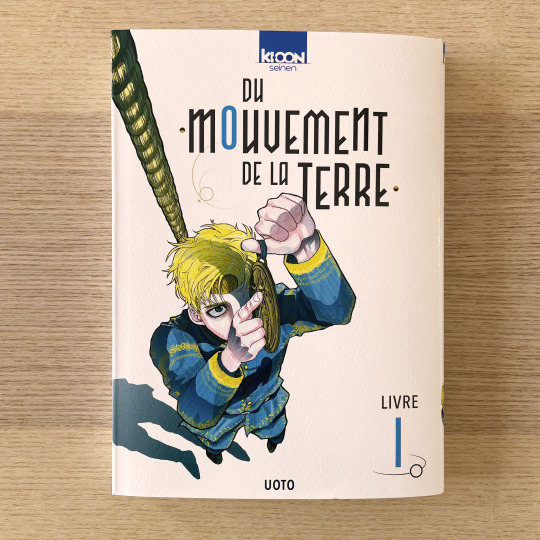
En bonne fan de récit historique, Du mouvement de la Terre était une des nouveautés que j’attendais le plus cette année, et je ne suis pas déçue ! De prime abord, on pourrait penser que le sujet de l’héliocentrisme est bien vaste, pas franchement intéressant. Pourtant, c’est un sujet que je trouve passionnant, et qui en dit long sur le passé de l’humanité, sur comment l’humanité s’envisageait au sein de l’univers. Malgré le sujet complexe, le manga est tout à fait accessible et ne cherche pas à nous expliquer en détails la théorie de l’héliocentrisme. Plutôt que de choisir un angle rigoureusement historique et scientifique, UOTO s’attache davantage à nous livrer un récit d’aventures. En effet, plus qu’un conflit d’idéologies, c’est une véritable poursuite entre l’Église, représentée par le personnage de Novak l’inquisiteur, et les sciences, représentées par Rafal, qui se dessine. Au niveau graphique, j’ai trouvé ça plutôt chouette. Il y a de très belles pages et de bonnes idées de mise en page. J’ai notamment aimé les pages où l’auteur insiste sur le regard du jeune Rafal, puisqu’après tout, l’astronomie n’est qu’une question d’observation. Je peux tout de même lui reprocher d’être un poil cliché façon « seinen mature se déroulant au Moyen Âge ». On y trouve des moments de violence graphique ou encore des doubles pages d’une extrême puissance soudaine par exemple. Le manga reste dans l’ambiance « Moyen Âge sombre et violent ». UOTO est un auteur encore jeune, et je suis persuadée qu’il emmènera ce récit très haut et très loin. Du mouvement de la Terre promet d’être un récit passionnant, aussi bien dans le fond que dans la forme.
Cet article touche déjà à sa fin ! Mon préféré de la liste est de loin Du mouvement de la Terre. Est-ce vous avez lu ces titres ? Si oui, vous en avez pensé quoi ?? Dites-moi tout sur Twitter ! Vous avez peut-être remarqué, mais j’ai changé le titre de ces articles consacrés aux tomes 1, je ne pouvais plus me voir « …comme s’il en pleuvait ». Pour terminer, merci encore de m’avoir lu jusqu’ici, une nouvelle fois, et on se retrouve sur Twitter, Ko-fi (oubliez de jeter un œil à mon super marque-page !!) et, pourquoi pas sur Anilist. Portez-vous bien, des bisous.
#yasha#akimi yoshida#toilet bound hanako kun#aidairo#ikoku nikki#tomoko yamashita#Genderless Danshi ni Aisareteimasu#tamekou#chi Chikyû no Undou ni Tsuite#uoto
4 notes
·
View notes
Text

Queens Quality
16 volumes (as of 4/14/2023, ongoing)
Licensed by Viz Media
Fumi Nishioka lives with Kyutaro Horikita and his family of “Sweepers,” people who specialize in cleaning the minds of those overcome by negative energy and harmful spirits. Fumi has always displayed mysterious abilities, but will those powers be used for evil when she begins to truly awaken as a Queen?
Related Series
QQ Sweeper (Prequel, licensed by Viz Media)
Status in Country of Origin
18 Volumes (Ongoing)
Tags:
Amnesia
Capable Female Lead
Capable Male Lead
Caring Male Lead
Cleaning
Couple Growth
Dead Parent/s
Emotionally Strong Female Lead
Ghost/s
Hard-Working Protagonist
Hidden Past
Hidden Power/s
Live-in Lover
Male Lead Falls in Love First
Mind Control
Past Plays a Big Role
Possession
Social Anxiety
Special Ability/ies
Super Powers
Teamwork
Trauma
#Queens Quality#action#comedy#drama#romance#supernatural#shoujo#manga#ongoing#viz media#shojo beat#MOTOMI Kyousuke#2015#2010s#Shogakukan#betsucomi
12 notes
·
View notes